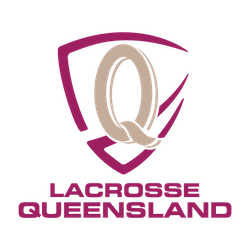
Lacrosse was played in Queensland during the 1880s. The Queensland Lacrosse Union is listed in Pugh’s Almanac and Directory of 1885. In 1888 the Savage Lacrosse Club held a smoke social and annual meeting. Photographic records exist of interstate teams in 1889, 1904, 1905 and 1906. In July and August 1906 two interstate games were played against Victoria, the first game was won by Victoria 16 – 12. In the second game Queensland defeated Victoria 15 – 6.
In 1907 there were various lacrosse clubs in the Brisbane metropolitan area. Photographs dated 1907 are labelled with the club names of Ottawa, Mohican, Delaware, Buffalo, Iroquois, Toombul and Wallaroo.
The Kalinga Park sporting grounds were opened in 1910 with the support of local sporting clubs including the Kalinga Lacrosse Club. By the 1920s lacrosse was being played at Norman Park after being promoted by the Wilson family of Waratah Foundry fame.
The Nudgee Lacrosse Club also had a field at the Nudgee Boorah Ring in the 1920s and 30s.
Despite this early success, lacrosse in Queensland was reduced to a small group of enthusiasts in the post World War II era. By the 1980s all existing lacrosse clubs had disappeared. In the 1990s and at the turn of the century, lacrosse was played on an occasional basis in the Brisbane, Sunshine Coast and Toowoomba areas. A Queensland Lacrosse Association was in operation with the support of expatriate Victorians and local enthusiasts.
From 2000 until 2007 lacrosse in Queensland grew to five teams, four in Brisbane & one in Namboure, with approximately 80 players consistently playing on weekends.
However due to internal politics and personal conflicts, participant numbers dropped to twelve players in Brisbane and Sunshine Coast.
Even though lacrosse in Queensland suffered a major shock to participant levels, two families persevered and in 2009 established Brisbane Eagles Lacrosse Club; Queensland’s first ever registered club., affiliated to Queensland Lacrosse Association.
At the conclusion of the 2013 lacrosse season, the sport has now grown to incorporate clubs located in Brisbane, Gold Coast, Toowoomba, Sunshine Coast and Cairns. Regular compeitions are now held between the members of these clubs and following on from hosting an interstate series with New South Wales on the Gold Coast in 2012, a mens representative teams travelled to Sydney to compete. With a foundation of clubs established and volunteers helping to develop the sport, the next three years will see the sport focus on driving junior participation growth to ensure that lacrosse continues to remain on the sporting landscape in Queensland for many more years to come.
